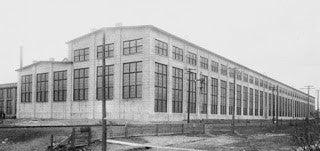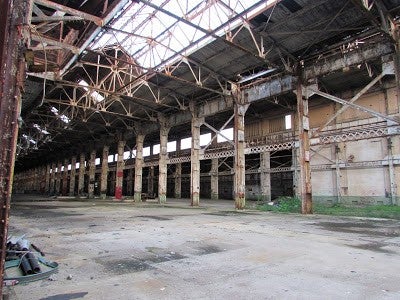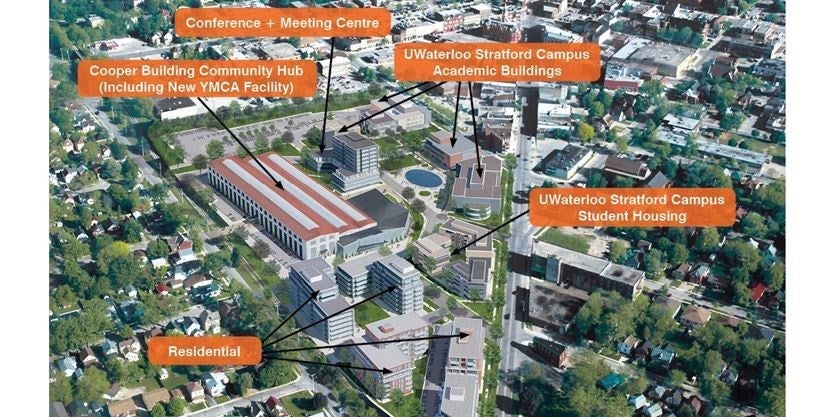
Isn’t the demolition of a heritage building the antithesis of its conservation?
Well, under Ontario’s land use planning rules, the answer seems to be: Not necessarily…
The starting point of course is the bedrock cultural heritage policy set out in policy 2.6.1 of the Provincial Policy Statement:
Significant built heritage resources and significant cultural heritage landscapes shall be conserved.1
We’ll look at a couple of cases this year where the Local Planning Appeal Tribunal (LPAT) has confronted the issue of whether “conservation” can involve demolition.
In the first case, from Stratford, the question was more abstract. Was it appropriate to include the word “demolish” in an Official Plan policy outlining actions to which a particular heritage structure might be subject?
In the second, from Toronto, the question was quite concrete. Was the demolition of a particular heritage building in a heritage conservation district acceptable?
In both the LPAT responded in the affirmative.

The 1907 Locomotive Repair Shops building soon after completion
The Grand Trunk Railway Locomotive Repair Shops in Stratford were the economic engine of that city from the 1870s through to the 1950s. The “Shops” have long been shuttered and abandoned; the huge site adjacent to the downtown core was expropriated by the City of Stratford in 2009.

The interior of the Shops structure today
Having acquired the site, the city wasn’t sure what to do with it. The property was dominated by an enormous (about 160,000 square feet!) surviving structure from 1907. One option was classic urban renewal — raze the site in preparation for new development of some kind, maybe incorporating some form of commemoration. Another was to keep the historic building and adapt it, but for what? For many years it looked like the former course was more likely. In 2014 city council pointedly declined to follow the recommendation of its municipal heritage committee to designate the property under the OHA.
During this time the city was also working on revising its Official Plan. The new OP would, among other things, have specific policies for the GTR site. The original version of these policies included a statement noting that the city is in the process of determining the future of the existing structure on the site “which may include demolition, partial preservation, rehabilitation and/or commemoration.”
Local preservationists were alarmed by the word “demolition” and the apparent emphasis on that option. They appealed the OP revisions to the Ontario Municipal Board.
Meanwhile, the slow, on-the-ground planning for the future of the GTR site was moving along — and the pendulum was swinging in favour of a preservation approach. The city could not ignore the immense significance of the site,2 nor the great, if challenging, potential for reuse of the Shops’ structure (hey, how about a community hub?). A preliminary master plan for the whole site was in the works.
Reflecting this shift, the OP policies for the site — rebranded as the Grand Trunk Anchor District — were revisited and significantly reworked. They now noted that the site contains a significant built heritage resource, that the city is in the process of determining the future of the Grand Trunk building, and that the options include “rehabilitation, adaptive reuse, partial preservation, conservation, commemoration and/or demolition in whole or in part. Given the significance of the built heritage resource a heritage impact assessment shall be submitted for any development or permit application in the Grand Trunk Anchor District.”
But “demolition” was still in there, the appellants were not appeased, and the appeal proceeded to a hearing before the LPAT.
In its decision this March, the Tribunal observed that the case arose because of public suspicion of the city’s ultimate intentions for the property.3
[I]t seemed clear that the phraseology used in [the original wording of the policies] which lists “demolition” as the first option caused significant mistrust between elements of the public and City Council due to the fact that the Subject Lands had been recommended to be designated under the Ontario Heritage Act to City Council but City Council had declined to do that. Thus with demolition as being the first option …, it may have served to heighten the concerns of the participants that the structure would be totally demolished.4
To the argument that the changes to the OP policies did not go far enough — and that inclusion of the word “demolition” in the policies was the antithesis of what was intended in PPS policy 2.6.1 — the Tribunal demurred.
… [T]he Tribunal finds that the City ought to have as wide a range of options available to it so as to enable the possible adaptive reuse of the Grand Trunk building and the Subject Lands being reclaimed from a brownfield site, due to their prominent location within the downtown area of the City.
The Tribunal does not agree that demolition is the antithesis of conserved as set out in the definition in the PPS. … [S]ometimes some demolition may be necessary to effect the adaptive reuse of a significant built heritage resource.5
And with that the Tribunal found that the OP policies as modified were consistent with the PPS and approved them.
The Tribunal here was being asked whether a municipality’s Official Plan policies for a significant heritage property — policies which contemplated the possibility of “demolition, in whole or in part” — were consistent with the PPS direction that significant built heritage resources be conserved.
In concluding that the OP wording was consistent and therefore appropriate, the Tribunal was not saying that an actual redevelopment proposal that entailed demolition of all or part of the structure would satisfy the PPS. No such proposal was before it. The Tribunal’s concern was to not “tie the hands of the City” with respect to the range of options in the OP for redevelopment of a significant city-owned property.
The second case we’ll look at is very different. It did involve the proposed demolition of a significant building — and in the South Rosedale heritage conservation district!
But oops, we’re out of space … see you next time.

A 2017 design concept for the Stratford GTR site (Cooper Building = GTR Shops building)
Notes
Note 1: Conserved, as currently defined in the PPS means: the identification, protection, management and use of built heritage resources, cultural heritage landscapes and archaeological resources in a manner that ensures their cultural heritage value or interest is retained under the Ontario Heritage Act. This may be achieved by the implementation of recommendations set out in a conservation plan, archaeological assessment, and/or heritage impact assessment. Mitigative measures and/or alternative development approaches can be included in these plans and assessments.
Note 2: In its eventual decision in the case the Local Planning Appeal Tribunal noted, despite the city’s failure to designate the property, that there was no disagreement among the experts and participants in the case that the GTR site is of local, provincial, national and perhaps even international heritage significance.
Note 3: 1353837 Ontario Inc. v. Stratford, March 25, 2019. OMB case no. PL160830. See https://www.omb.gov.on.ca/e%2Ddecisions/pl160830%2Dmar%2D25%2D2019.pdf.
Note 4: Para. 44.
Note 5: Paras. 81- 82.